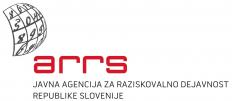Zvočno gradivo gramofonskih plošč kot vir etnomuzikoloških in folklorističnih raziskav (Slovene)
Principal Investigator at ZRC SAZU
Drago Kunej, PhD-
Original Title
Zvočno gradivo gramofonskih plošč kot vir etnomuzikoloških in folklorističnih raziskav
Project Team
Marjetka Golež Kaučič, PhD, Marija Klobčar, PhD, Mojca Kovačič, PhD, Rebeka Kunej, PhD, Marjeta Pisk, PhD, Urša Šivic, PhD, Peter Vendramin-
ARIS Project ID
L6-2113
-
Duration
1 May 2009–30 April 2012 -
Financial Source
ARRS

The project introduces an innovative interdisciplinary research methodology that is based on the mutual dependence of varied research conducted in history, ethnomusicology, and folklore studies, as well as in acoustic technology and modern IT communications technologies. The project’s basic premise is that detailed, comprehensive, and systematic study of material recorded on historical sound carriers is possible only through good knowledge of accompanying information about the recordings, which can also make a decisive contribution to the proper playback of mechanical carriers using modern equipment. This also defines the auditory impression of the recorded material. The information accompanying the recordings thus has a direct influence on listening to and interpreting the sound recording. In addition, our perception of the recording’s content, its interpretation, and our ideas about the performers are influenced by our knowledge of the recording, performers, and the content recorded, as well as our knowledge of the historical and technical conditions at the time of recording and copying. Our sense of hearing is not an independent and unbiased sense organ, but is connected with other senses and knowledge. This is why the proposed studies are specific and innovative in their own right because they study the principles of Slovenian folk music and culture in general (which has its own specific features, different from other European cultures, but at the same time is also connected with them) from a new perspective; in addition, they are also innovative in their approach and connection of research areas. The research findings will enable further use of documented and archived material as well as a detailed study of the principles of Slovenian folk music. The proposed studies will thus provide the discipline with new insights into and approaches to studying Slovenian culture. In addition, the proposed studies will indirectly contribute to increased and better use of interdisciplinary connections and modern technologies, on which junior researchers in particular are already basing their folklore and ethnomusicology studies.
The authors acknowledge the financial support from the Slovenian Research Agency.
| 1. KUNEJ, Drago. How Fast Do 78 rpm Records Turn? This article analyzes some of the most important changes in the perception of sound recordings that result from playing them at incorrect playback speeds. The playback of old 78 rpm phonograph records is highlighted because this rotation speed was standardized relatively late and various other speeds were used during the recording process. These are generally not documented and must therefore be evaluated using other sources. Bibliographic reference (COBISS.SI-ID): 44323938 |
| 2. GOLEŽ KAUČIČ, Marjetka. Folk song and folk narrative tradition The author presented the history of gathering and researching of Slovenian folk song and narrative tradition with special regards on its characteristics, genres, forms and typology and also relationships with literature. This is the first treatise, published in Russian language, which treats Slovenian song and narrative folklore in whole. Bibliographic reference (COBISS.SI-ID): 31859245 |
|
3. KLOBČAR, Marija, ŠIVIC, Urša, VENDRAMIN, Peter, ŠIVIC, Urša (ur.). Sing to us, Katie : folk songs from Prekmurje
|
| 4. KUNEJ, Drago. Effects of specific key environmental factors on the life expectancy of optical data carriers This paper presents the effects of specific environmental factors (i.e., temperature, humidity, and light) on the life expectancy of physical digital recording media, with an emphasis on optical media. In general, a cleaner, cooler, drier, and more stable environment extends the life expectancy, and appropriate protection of individual types of carriers is based on understanding the vulnerability of the carrier and consequently on providing optimal storage conditions and appropriate handling. Bibliographic reference (COBISS.SI-ID): 32201005 B.04 - Guest lecture |